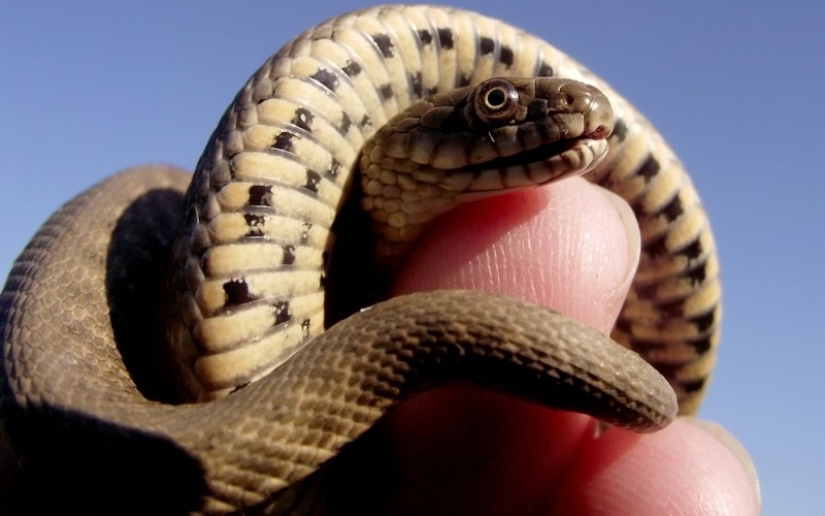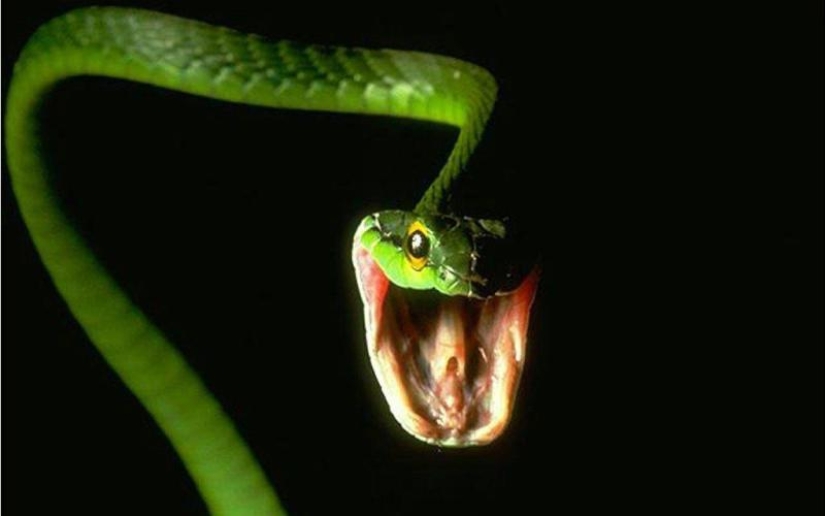The 10 most common myths about snakes
Categories: Animals
By Pictolic https://pictolic.com/article/the-10-most-common-myths-about-snakes.htmlSnakes are one of the most mysterious inhabitants of our planet. Primitive hunters, when meeting with any snake, hurried to escape from it, knowing that just one bite could doom to death. Fear helped to avoid bites, but prevented to learn more about these mysterious creatures. And where accurate knowledge was lacking, the gaps were filled with fantasies and conjectures, which became more sophisticated over the centuries.
And despite the fact that many of these reptiles have already been studied quite well, the old rumors and legends about snakes passed down from generation to generation still possess the minds of people. To somehow break this vicious circle, we have collected 10 of the most common myths about snakes and refuted them.

This myth has become known to many of us thanks to the work of Conan Doyle "The Motley Ribbon". In fact, an attempt to give a snake milk can end in death: they do not digest lactose in principle.
For unknown reasons, many people believe that snakes sting with their sharp, forked tongue at the end. Snakes bite with their teeth, just like all other animals. The language serves them for completely different purposes.
As already mentioned, the snake's tongue is not intended for attack. The fact is that snakes do not have a nose, and all the necessary receptors are located on their tongue. Therefore, in order to better smell the prey and determine its location, snakes have to stick out their tongue.
Of the two and a half thousand snake species known to serpentologists, only 400 have poisonous teeth. Of these, only 9 are found in Europe. The most venomous snakes in South America are 72 species. The rest were almost equally distributed across Australia, Central Africa, Southeast Asia, Central and North America.
It might actually work for a while. But the teeth will grow back, and the snake during their growth, not being able to express the poison, can get seriously ill. And by the way, snakes cannot be trained — for them, any person is nothing more than just a warm tree.
Statistics show that snakes most often bite people in self-defense. If a snake hisses at the sight of you and makes threatening movements, then it just wants to be left alone. If you step back a little, the snake will immediately disappear from sight, hurrying to save his life.
Most snakes feed on rodents, there are species that eat frogs and fish, and even insectivorous reptiles. And king cobras, for example, prefer to eat only snakes of other species. So what exactly to feed the snake depends only on the snake itself.
Snakes are typical representatives of cold-blooded animals. And so the snake's body temperature will be the same as the ambient temperature. Therefore, not being able to maintain an optimal body temperature (just above 30 ° C), snakes are so fond of basking in the sun.
Another story that has nothing to do with snakes. The skin of these reptiles contains practically no glands and is covered with dense smooth scales. It is from this pleasant to the touch snake skin that shoes, handbags and even clothes are made.
Quite often you can see the image of the serpent-tempter wrapping around the trunk of the tree of knowledge. However, this has nothing to do with the actual behavior of snakes. They climb on the branches of trees and lie on them, but there is absolutely no need for snakes to wrap their bodies around them.

Snakes drink milk

Attacking, snakes sting

Snakes stick out their tongue before throwing, threatening

Most snakes are venomous

You can "secure" a snake by pulling out its teeth

Snakes always attack at the sight of people

Snakes can be fed meat

Snakes are cold to the touch

Snakes are covered in slime
Snakes entwine branches and tree trunks
Recent articles

At first glance, these colorful works look like ordinary paintings - but upon closer inspection, it turns out that they are made... ...

I want to somehow distract myself from the news about the pandemic and plunge into the beautiful. Here, for example, is a story ...

Serbian surrealist artist Dragan Ilić creates astonishing and provocative paintings that blend symbolism with eroticism, and ...